Successful Pedestrian Malls Kept Cross Streets Open
Pedestrian malls, the closing of a street to vehicles, is an area of great interest to me. Popular in the 1960s & 1970s, very few had long-term success in North America, most failed and have been reversed. St. Louis’ former 14th Street Pedestrian Mall was such a failure.
In September I got to visit two of the successes, both in Colorado: Denver’s 16th Street Mall and Boulder’s Pearl Street Mall. After visiting these two I’ve identified some key differences that I believe contributed to the success of these two while others failed. The main difference is both of these allow the cross streets to continue through uninterrupted. Most pedestrian mall projects screwed up the street grid in two directions, the closed mall street and all the intersecting streets. Depending on the length of the pedestrian mall this could mean 1-8 cross streets got redirected. In doing so a large area and many streets were cut off from regular traffic.
St. Louis’ 14th Street Pedestrian Mall — 1977
- Length: 2 blocks
- Status: removed
- Map (was 14th from St. Louis Ave to Warren St)
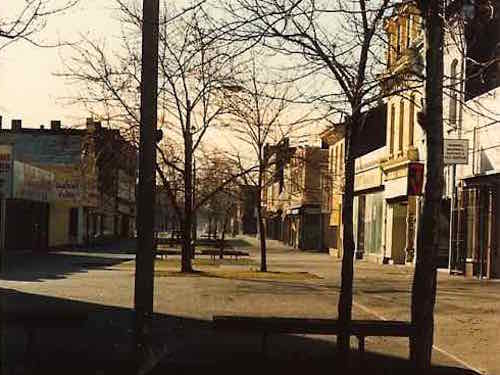
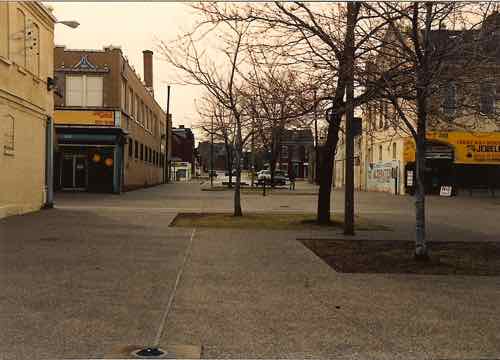
St. Louis’ pedestrian mall was only 13 years old when I first saw it in the Fall of 1990. Long-time residents I talked to said the mall failed very early on, long before I saw it 13 years later.
Boulder’s Pearl Street Mall — 1977
- Length: 4 blocks
- Status: active
- Map
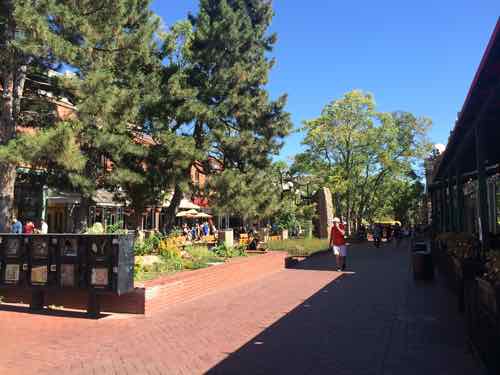
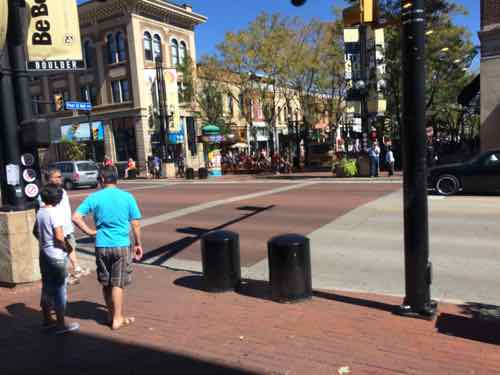
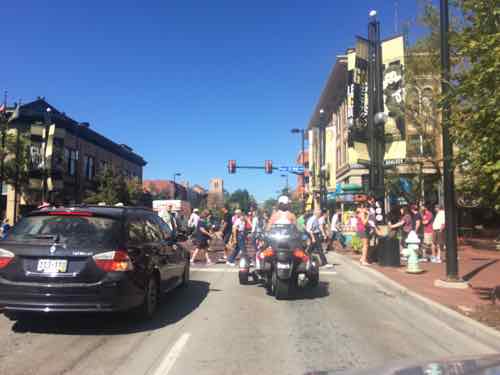
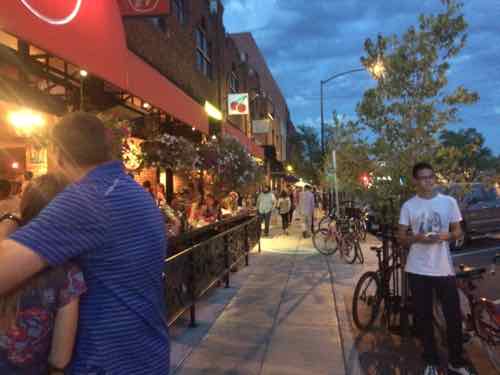
Many small town pedestrian malls were built by malling the main highway that ran through the downtown business district and creating opposite one way streets on either side so highway traffic could continue. Boulder, however, allowed their highway to continue with only a traffic signal like you’d see if Pearl St was still open to cars. They too did the one-way couplet thing on parallel streets, but it and the mall are perpendicular to the main highway through town.
Denver’s 16th Street Mall — 1982
- Length: 13 blocks
- Status: active
- Map
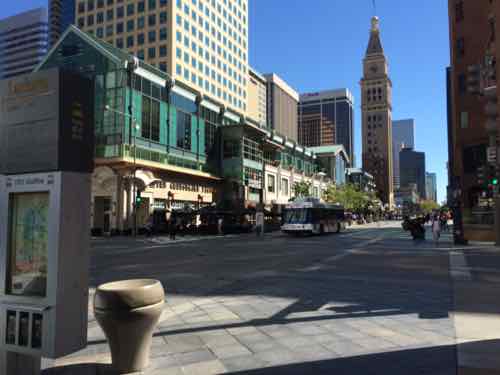
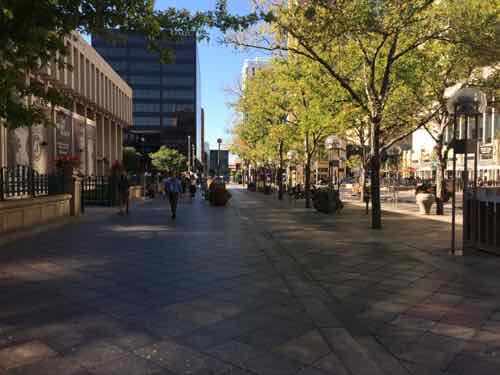
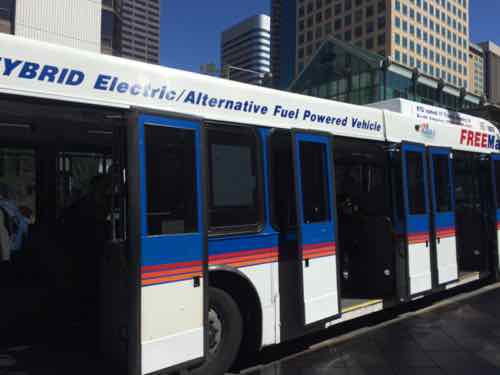
Denver was late to get a pedestrian mall, few were built in the 1980s. Perhaps their delay paid off, enabling them to see mistakes made by other cities. Chicago also had a transit mall, but it was for many bus lines. The diesel fumes meant their mall wasn’t a pedestrian paradise. Whereas Denver runs free shuttles to get people up and down the 13 block length, with several points where you can connect to local bus or light rail lines.
It appears Denver, unlike St. Louis, has kept its street grid in tact — with the exception of 16h Street. St. Louis has made it a habit of closing streets, disrupting the grid.
Conclusion
Another successful pedestrian mall is Church Street Marketplace in Burlington VT (map). Like Boulder & Denver, the cross streets continue uninterrupted. I need to return to my grad school data to see if any of the failed/removed pedestrian malls allowed cross streets to cut through the mall, I don’t recall any.
This is not to say that the many failed pedestrian malls might have succeeded had they kept cross streets open, or a that a remaining mall could be enlivened by opening the cross streets. Both might be the case, I just can’t come to that conclusion — yet.
Still, St. Louis serves as an example of ongoing struggles when the street grid has been repeatedly compromised.
— Steve Patterson
I’d think a big part of 14th street problem was also the state of the surrounding neighborhood at the time.
You got most things right, but here are a few clarifications:
In Boulder, Broadway runs north-south and Pearl Street runs east-west. While Pearl was once the traditional “main” commercial street (thus the architecture), it was bypassed by Canyon Boulevard, that also runs east-west (and is four lanes wide), two blocks to the south, prior to the mall being created, replacing an abandoned rail corridor. One unfortunate thing that has happened, however, over time, in Boulder, is the “mallification” of the mall, where things like a really cool, local, hardware store have been replaced by an assortment of chain stores that you can find in many enclosed malls.
In Denver, the current mall shuttles are NOT “non-polluting”, they’re low-pollution, custom-designed, hybrid vehicles, that use a small, Ford, four-cylinder, CNG-fueled engine to keep the batteries charged. The original mall vehicles were mostly diesel powered, along with a few all-electric vehicles used at peak times.
In Denver, the basic concept for the transit mall was to have two transit centers, one at each end of the mall, to keep bus routes that ended downtown from having to circulate thru downtown. Everyone that worked downtown was forced off of the bus that got them to the edge of downtown, but since the shuttle buses were both “free” and very frequent, transfers were not viewed as a major inconvenience, especially since the bus routes that traversed downtown were relocated to 15th and 17th, where they only stop every third block, making for a multi-block walk for many riders.
Yes, for the most part, Denver has worked hard to maintain and enhance the existing street grid, with the obvious exception of freeways and major sports venues. The one place where the grid did get interrupted was just west of downtown, where multiple streets were closed to create the Auraria Higher Education Center: http://www.ahec.edu/about-auraria-campus/maps/ (And opening 5 years later, 1982 vs. 1977, ain’t exactly “late to the game” for the 16th Street Mall, given the additional complexity!)
I’ll also argue that there are three things that make urban malls successful – one, as you noted, keeping the cross streets open. Two, being in or becoming a viable, if not strong, retail area. And three, having major streets nearby, so people can come down and shop, work or entertain themselves, drawing from far more than just the immediate area / neighborhood. In Boulder, Broadway and Canyon; in Denver, it’s Broadway / Lincoln, Colfax, Speer Boulevard and the Auraria Parkway.
The quickest way to see an urban mall die is to have no there there – if there’s no reason to be there, people won’t make the effort. And both Boulder and Denver have succeeded, at least partially, because they have a strong concentration of white collar jobs near their respective malls, which creates a daily flow of consumers for the ground-floor retail spaces. It’s a synegistic relationship, not just one component!